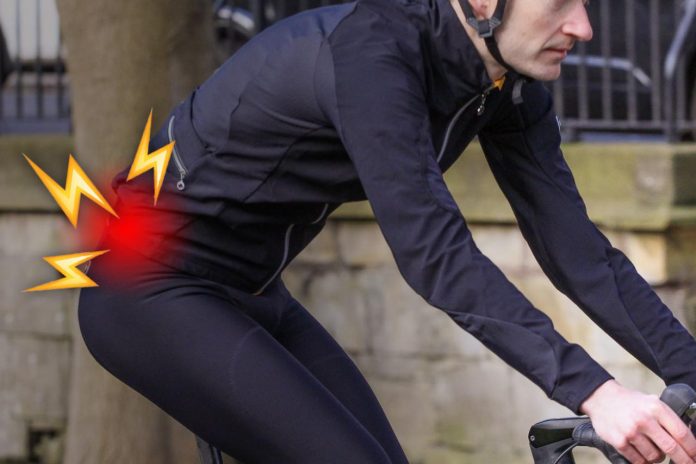According to a research, it seems the most often problem among cyclists is not knee pain in cyclists but lower back pain.
When scientists investigated 116 professional road cyclists and looked at the types of overuse injuries suffered over the previous year, some startling facts emerged: 94% of the cyclists had suffered some kind of overuse injury during that period and 45% of the injuries were to the lower back.
There are a number of factors that can contribute to riders suffering from lower back pain. These include incorrect bike fit, limited mobility or flexibility and insufficient levels of conditioning or fitness.
Everything from saddle height to cleat set-up can be responsible. There are some common candidates but bike fit is complex and very personal. Trying to identify an issue yourself by trial and error can be a lengthy, frustrating and often fruitless process. If lower back pain is having a negative impact on your riding, a physiotherapist led bike fit could, in the long run, save you time and discomfort.
For amateur riders, who try to emulate the pros by slamming their stems and adopting extremely aggressive positions, this excessive saddle to bars drop can be stressful on the lower back. It takes a lot of time and effort to be able to sustain such a position and has to be adapted to gradually.
You will often read articles that will point the finger of blame straight away at the hamstrings or the hip flexors but it is rarely that simple. These areas are often tight in cyclists but the body has to be looked at as a whole. A general all over mobility routine and dedicated off the bike strength work should be part of all riders’ training plans whether they have lower back issues or not.
So called “core exercises”, which usually involve very small and precise movements to target a small muscle group in isolation, are often a waste of time and ineffective for many riders. They are really rehabilitation exercises and, if you can ride a bike and function normally in day to day life, aren’t really relevant to you. They will do absolutely nothing to alleviate back pain that develops 2-3 hours into a bike ride. Some riders do credit an improvement in lower back discomfort to such exercises but it’s often no more than a coincidence.
Rest and time are far more likely to be the significant healers. Good trunk strength and stability is important in preventing and alleviating low back pain but this is more effectively developed with multi joint exercises and movements.
Even on flat rides, get into the habit of standing out of the saddle regularly to stretch your back off a bit. Ask your ride mates to check if you are rocking excessively from side to side as you pedal as this can be indicative of a bike fit issue. Most of all though, be proactive and seek professional advice. Off bike conditioning work has been shown to not only make you a stronger rider but also to be beneficial for preventing injuries and can help some cases of lower back pain.














